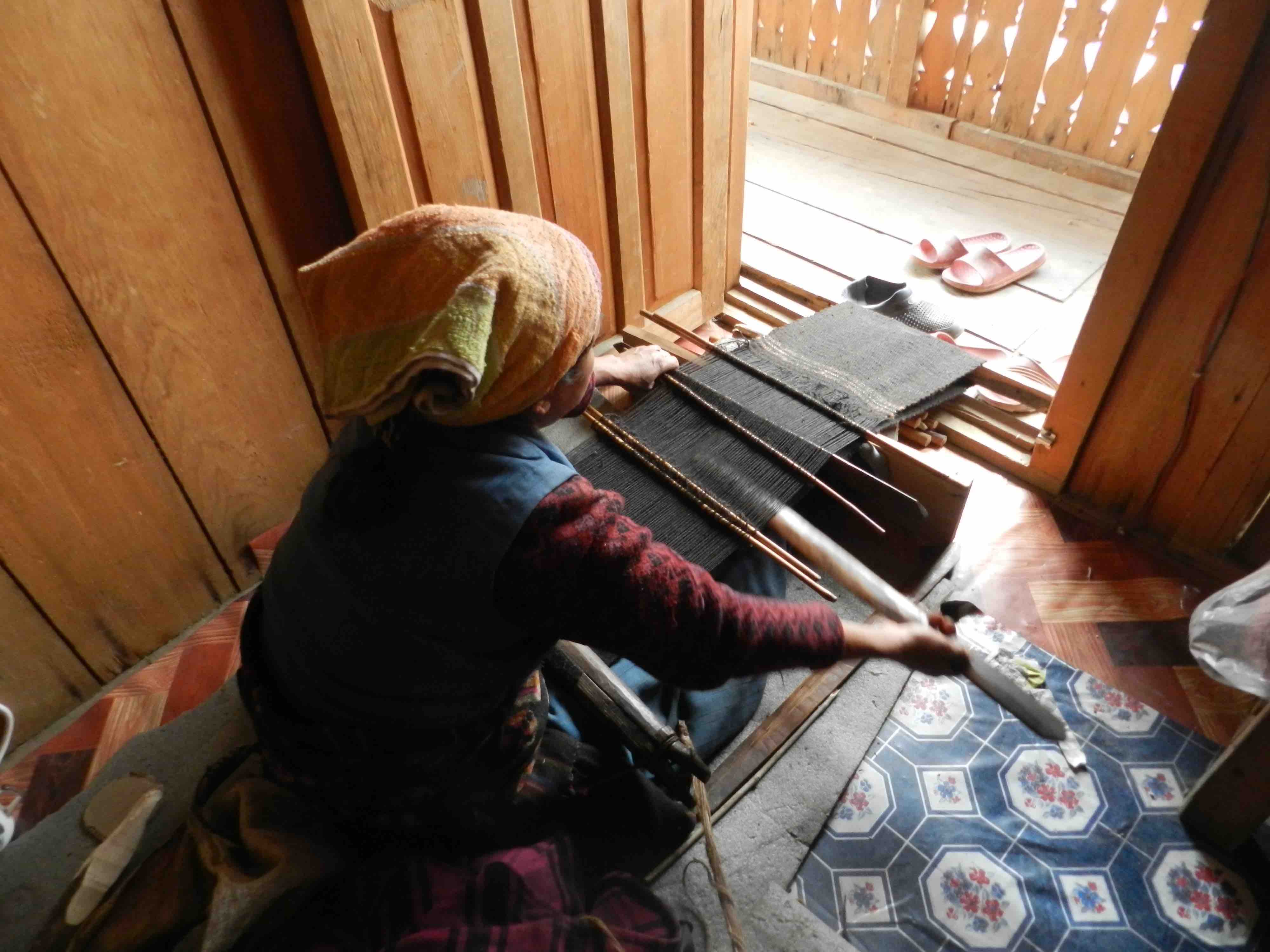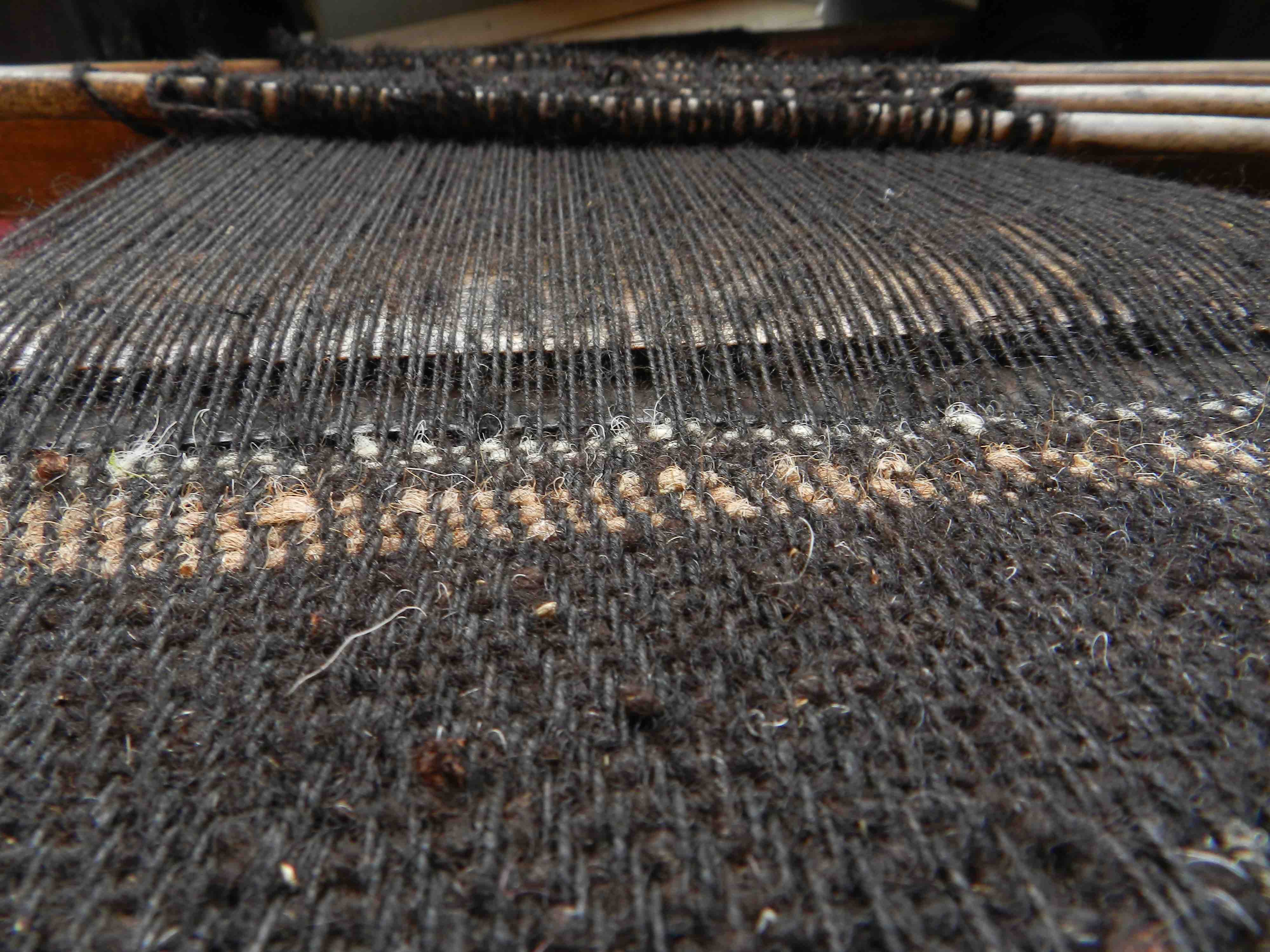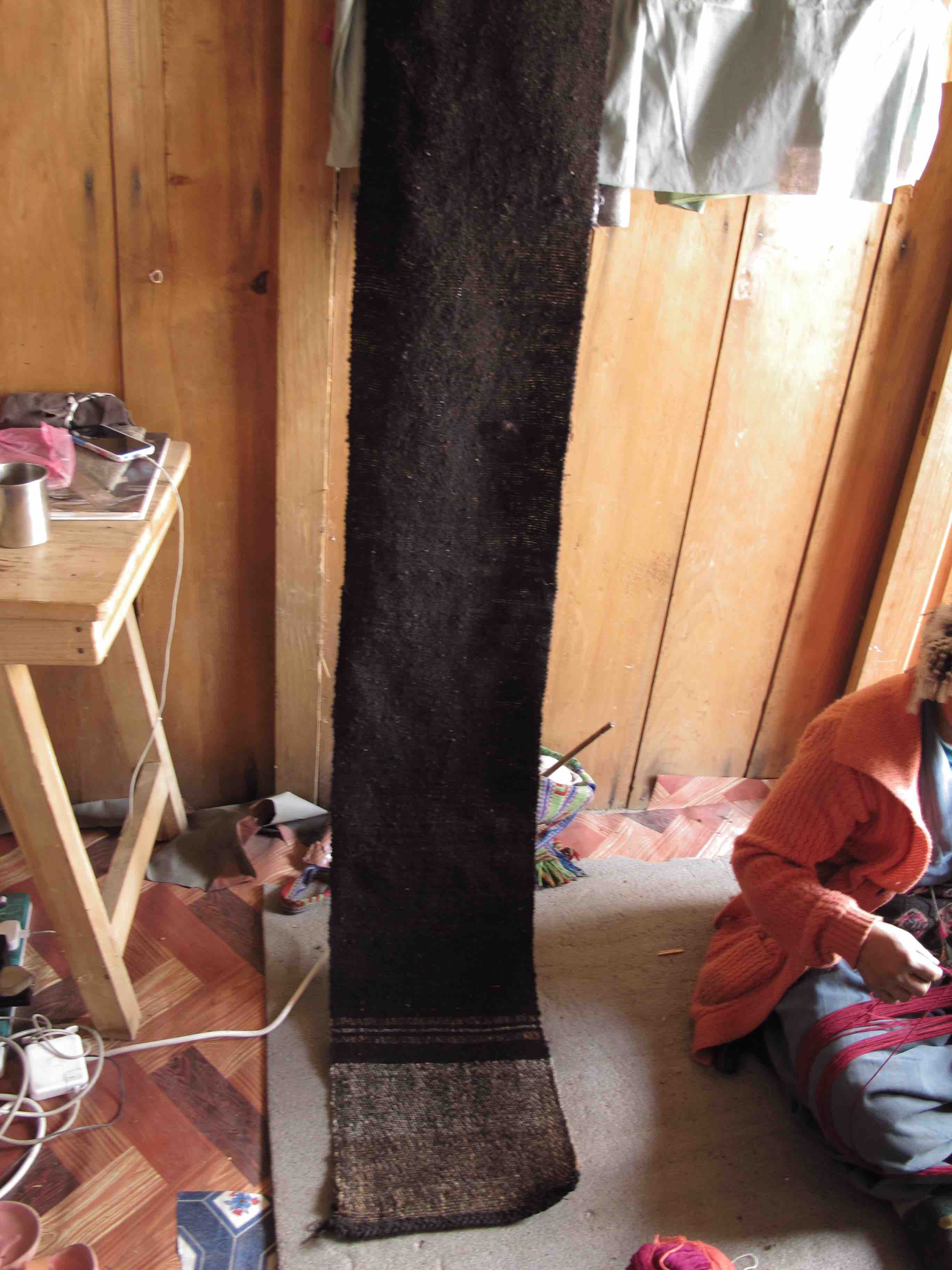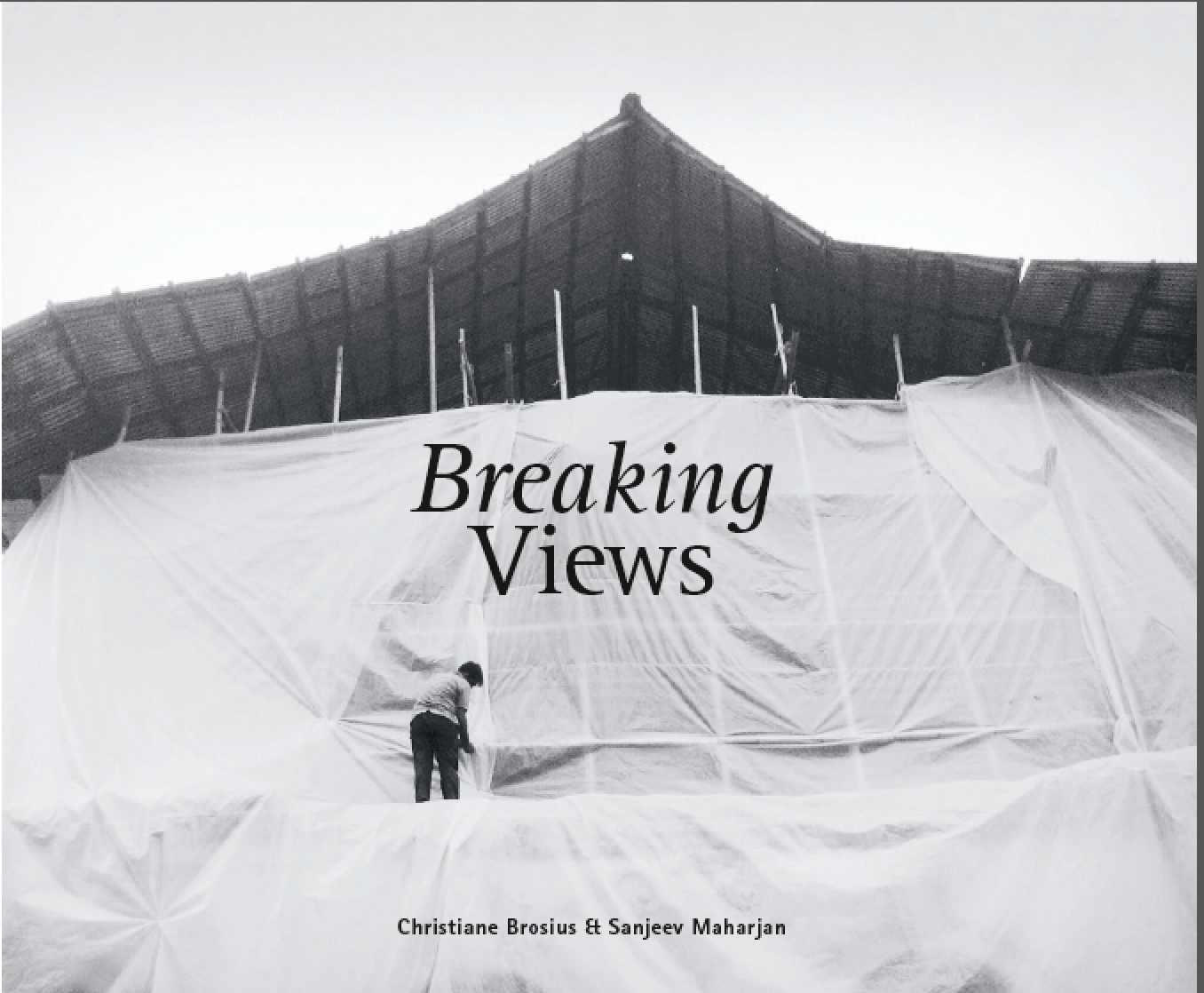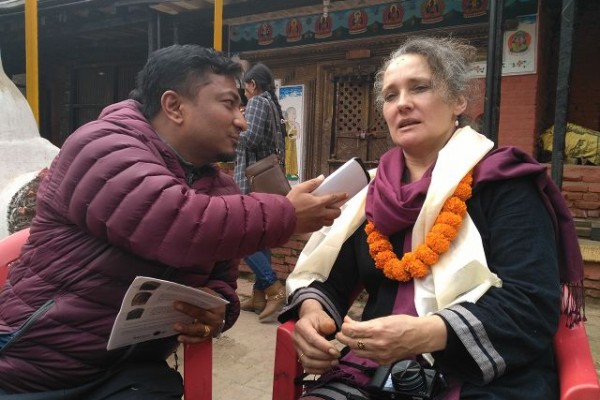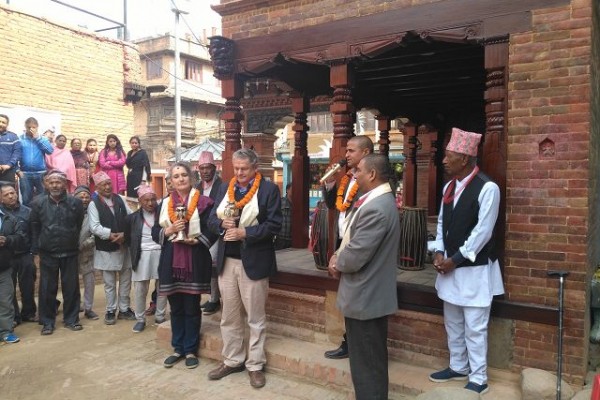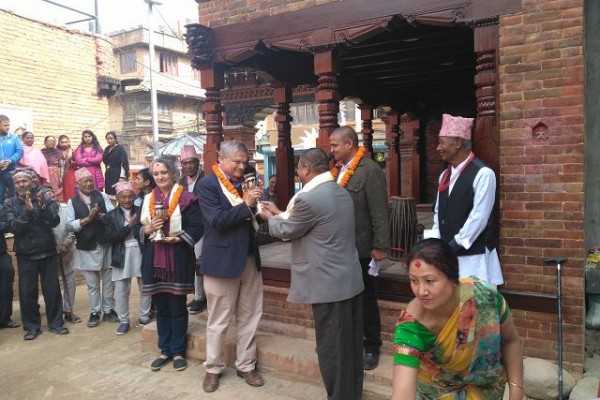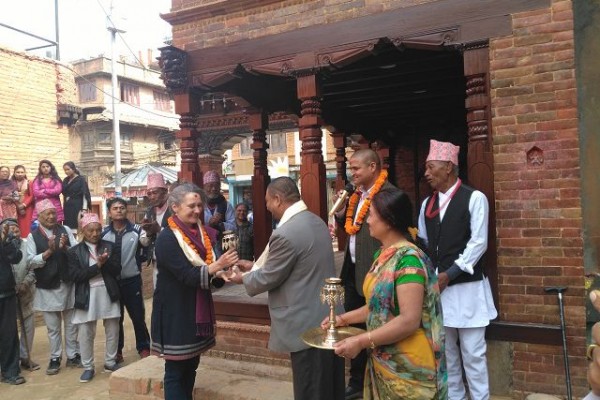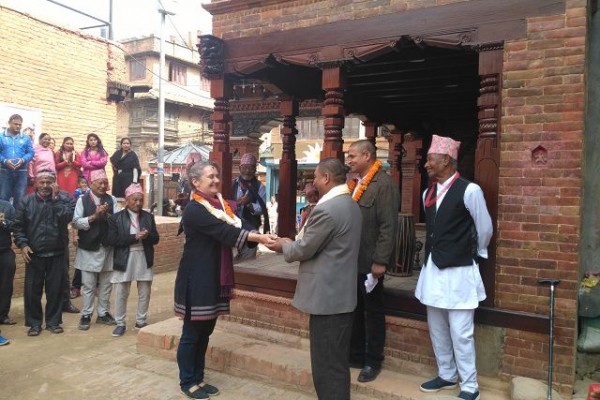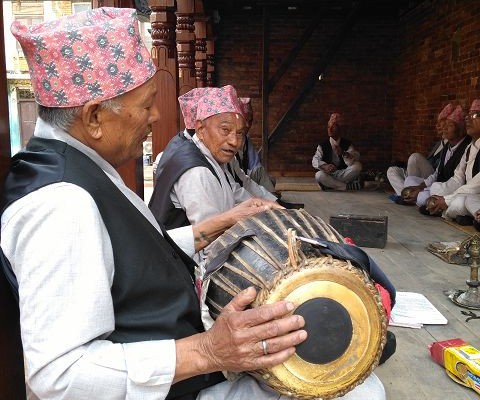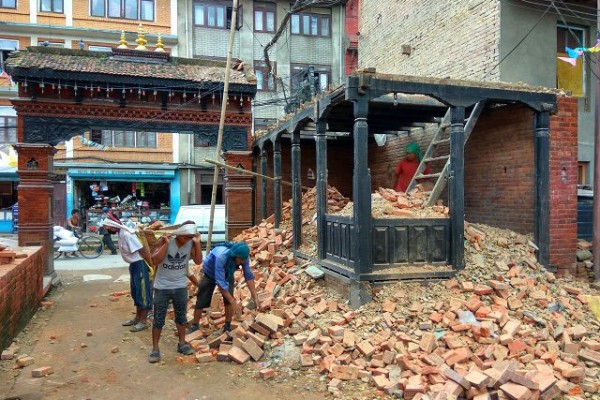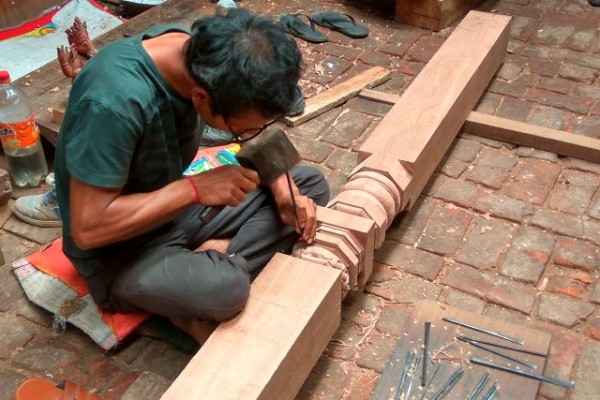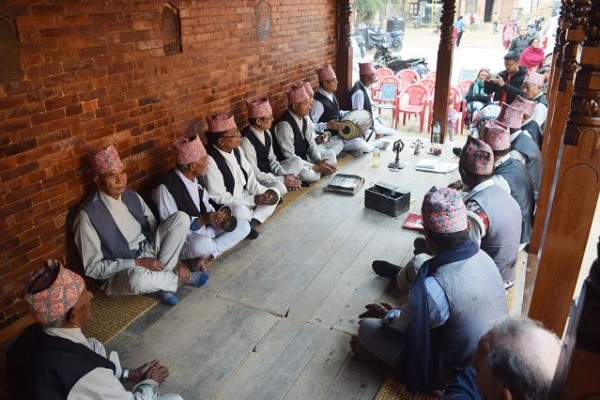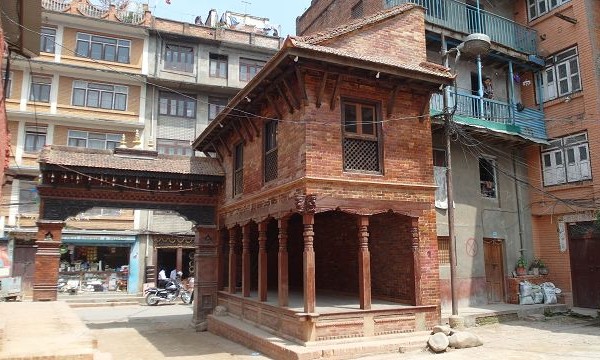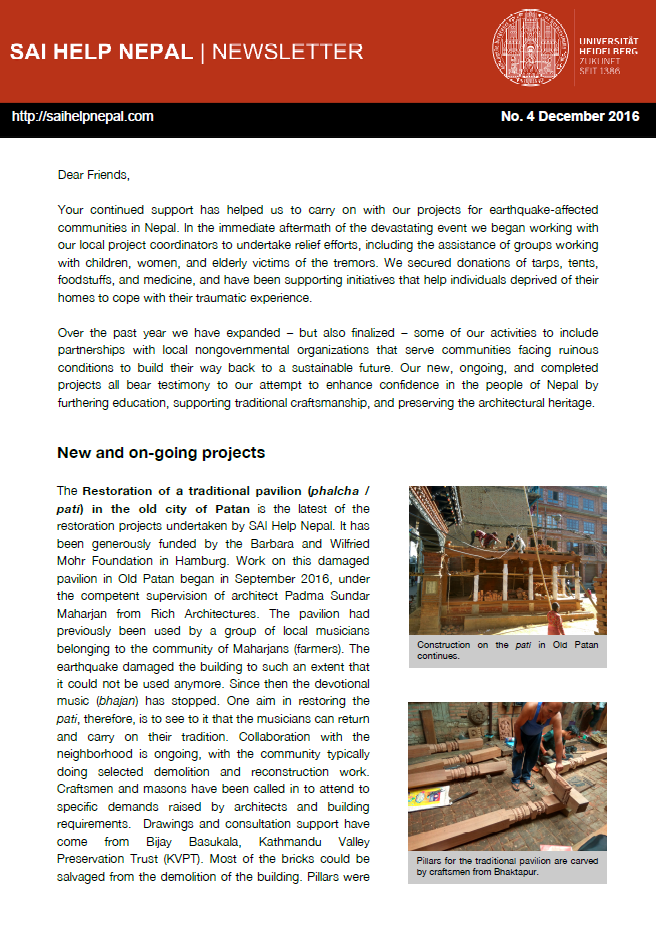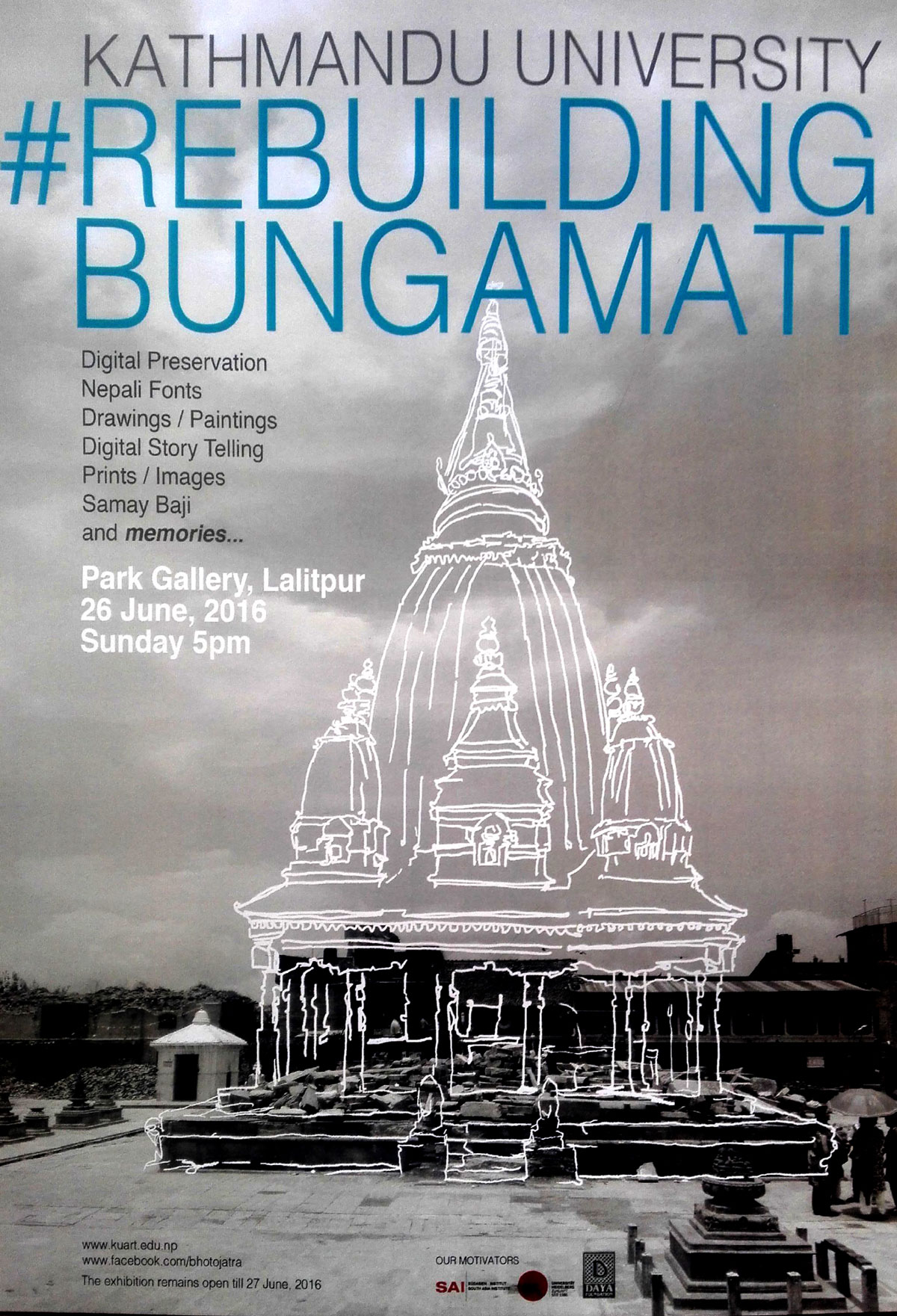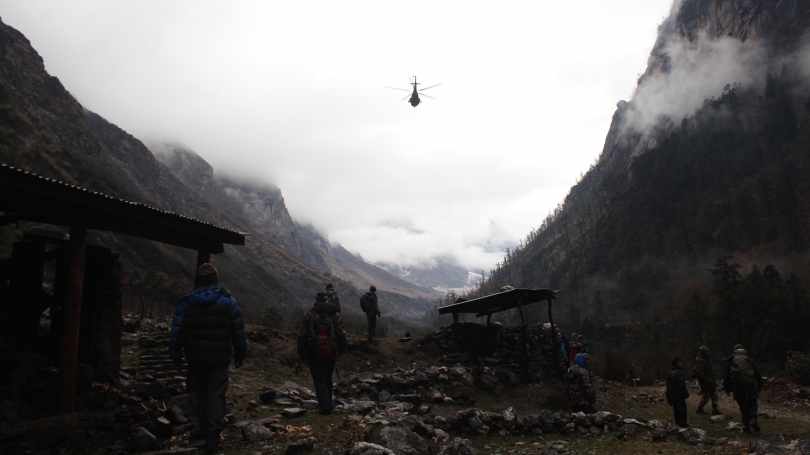Sharareh Bajracharya Background
The April 25, 2015 earthquake and its aftershocks destroyed the homes of over 500 households in Gatlang VDC, Rasuwa. Two years later, many people still live in scattered tents on the outskirts of the village. Despite the loss of permanent shelters, activities such as weaving, herding, tilling the land, seed banks, gathering herbs, etc continue. These are skills and knowledge developed and passed on by the Tamang people that demonstrate a deep relationship with this land. The project, “Working with Earthquake-Affected Weavers in Rasuwa — Exploring Tamang Livelihood and Education Opportunities” was conceptualized as a way to find how these skills and their stories can lead to a source of livelihood for the people here. Through the support of SAI Nepal Help Initiative, what began with a one-month artists-in-residence in Gatlang, Rasuwa from 6 March to 6 April, 2016 has now evolved into a production of 10 sample bags using the textiles produced in Gatlang. We are calling the designs for these bags the Gatlang Series. A catalogue with the ten designs, design statements by the designers – Sanjeep Maharjan, Sunita Maharjan, and Kirti Man Shakya – , and a description of the process is being completed. We have now selected five of these bags to produce and introduce to a market that promotes ethical trade. The booklet gives us the exact dimensions of the bags, which we are using to calculate how much cloth we will need to produce 50 pieces of each of the five bags. We will be going to Gatlang in the last week of May, after the local elections are complete. Mendo Tamang, who is one of the two people we worked with in the artists-in-residence will be leading the production, ensuring the quality of the materials according to the specifications of the bags.
The Process
During the artists-in-residence, two women from Gatlang, Mendo Tamang and Tar Jhyalmo Ghale Tamang, shared their expertise in weaving, embroidery, dyeing, sewing, and indigenous knowledge about agriculture and geography with two artists, Sunita Maharjan and Sanjeep Maharjan, and a designer, Kirti Man Shakya. During the one month, the team worked together to research, experiment with and create samples of textiles, raw materials, illustrations, preliminary designs of products, and artistic forms inspired by Gatlang. The team became acquainted with each other’s skills, interests, and creative process. They began to experiment with traditional weaves and textiles to create an array of products and product ideas. After returning to Kathmandu, the two artists and designer continued to explore designs for bags. They have now each created a series of contemporary designs for bags that incorporate the weaving skills of the artisans and raw materials from Gatlang. It is this process that has led to the Gatlang Series.
The Bags: Gatlang Series
The Gatlang Series consists of 10 bags that highlight the handwoven indigenous textiles of Rasuwa. This series is a tribute to the indigenous Tamang lifestyle of herding, shearing, weaving, and farming. The rich, natural tones, durability and water resistance of the textiles is combined with the distinct aesthetics of each of the three designers. Each bag in the Gatlang Series is an effort to create viable and sustainable livelihoods of the earthquake ravaged Tamang community in Gatlang, Rasuwa. We look to create an industry that appreciates the indigenous Tamang skills, quality of their textile, and the history of its people. Promoting these products in national and international markets is about bringing awareness of these communities’ struggles to a larger audience and demonstrating the integrity and dignity of their labor.
- strengthen and revitalize indigenous traditional knowledge and skills of the community in Gatlang and to enable them to make it a source of income
- design products that use the textiles and raw materials from Rasuwa to benefit earthquake affected Tamang artisans and community[1]
- establish a manufacturing system that benefits the people of Gatlang and other earthquake affected communities
The Gatlang Series has been made possible through South Asia Institute Nepal Help Initiative’s support of the project “Working with Earthquake-Affected Weavers in Rasuwa — Exploring Tamang Livelihood and Education Opportunities” from February 2016 to present.
Design Room and Srijanalaya present the GATLANG SERIES, Bags CATALOGUE of Sample Products Textile Production Mendo Tamang, Tar Jhyalmo Ghale Tamang, and a network of women from Gatlang
Bag Designers
Kirti Man Shakya, Sanjeep Maharjan, Sunita Maharjan
Booklet Design: Kirti Man Shakya
About the Gatlang Series
Two hours of dirt road from Syafrubesi, Gatlang is the first stop on the Tamang Heritage Trail in Rasuwa. It is known for its majority Tamang community living in a tight-knit web of houses with stone laid walls, carved wooden faces, and roofs made of wooden shingles. The April earthquake and its aftershocks destroyed all these homes. Over five hundred households have been displaced and most people continue to live in scattered tents on the outskirts of the village, weathering the cold of the winter, winds, and the landslides during the monsoon. The Gatlang Series consists of 10 bags that highlight the handwoven indigenous textiles of Rasuwa. This series is a tribute to the indigenous Tamang lifestyle of herding, shearing, weaving, and farming. The rich, natural tones, durability and water resistance of the textiles is combined with the distinct aesthetics of each of the three designers. Each bag in the Gatlang Series is an effort to create viable and sustainable livelihoods of the earthquake ravaged Tamang community in Gatlang, Rasuwa. We look to create an industry that appreciates the indigenous Tamang skills, quality of their textile, and the history of its people. Promoting these products in national and international markets is about bringing awareness of these communities’ struggles to a larger audience and demonstrating the integrity and dignity of their labor. strengthen and revitalize indigenous traditional knowledge and skills of the community in Gatlang and to enable them to make it a source of income
- design products that use the textiles and raw materials from Rasuwa to benefit earthquake affected Tamang artisans and community[2]
- establish a manufacturing system that benefits the people of Gatlang and other earthquake affected communities
[image of beauty of Gatlang as well as what has happened after the earthquake. Should we put of Sanjeep’s Purpose of the Catalogue There are two main purposes of this publication: document the details of how each of the ten sample bags have been stitched, each bag’s dimensions, and the textile options that can be used
- document the concepts and process of how and why these bags were designed
Background
The Gatlang Series was made possible through South Asia Institute Nepal Help Initiative’s support of the project “Working with Earthquake-Affected Weavers in Rasuwa — Exploring Tamang Livelihood and Education Opportunities” from February 2016 to January 2017. It began with a one-month artists-in-residence in Gatlang, Rasuwa from 6 March to 6 April, 2016. The residency was organized a little less than a year after the earthquake. Two women from Gatlang, Mendo Tamang and Tar Jhyalmo Ghale Tamang, shared their expertise in weaving, embroidery, dyeing, sewing, and indigenous knowledge about agriculture and geography with two artists, Sunita Maharjan and Sanjeep Maharjan, and a designer, Kirti Man Shakya. The team experimented with traditional weaves and textiles to create an array of products and product ideas. [images of the artworks and designs with captions and people’s photographs] During the one month, the team worked together to research, experiment with and create samples of textiles, raw materials, illustrations, preliminary designs of products, and artistic forms inspired by Gatlang. The team became acquainted with each other’s skills, interests, and creative process. After returning to Kathmandu, the two artists and designer continued to explore designs for bags. They have now each created a series of contemporary designs for bags that incorporate the weaving skills of the artisans and raw materials from Gatlang. It is this process that has led to the Gatlang Series.
About Design Room
Design Room is a social enterprise of artist-crafted goods in Nepal. Design Room looks to foster innovation and creativity for a sustainable future in Nepal. One of the important tenets of the goods created is a conscientious use of materials and skills from Nepal. Design Room will provide forty percent of its profit-shares to Srijanalaya to continue its mission to create safe spaces of learning through the arts.
About Srijanalaya
Srijanalaya is a nonprofit, nongovernmental organization registered in Nepal in December 2013 whose mission is to create safe spaces of learning through the arts. We are a growing community of artists and educators who offer creative mediums as an alternative approach to rote-learning and static textbooks. We have designed art education programs both in and out of school, including museum education. Currently, we have worked in Gorkha, Kaski, Kathmandu, Mugu, Rasuwa, Lalitpur, and Nawalparasi. We believe that every child in Nepal should have access to safe spaces to express herself or himself and be heard. www.srijanalaya.com
Textiles of Gatlang
For generations, in the winter, sheep are herded, alongside yaks and cows, up and down a route that brings them down to the warmer areas near the Trisuli River. They return up to the higher altitudes in the summer. Natural Tones: Reddish brown | Off-white | Black/Dark Brown
